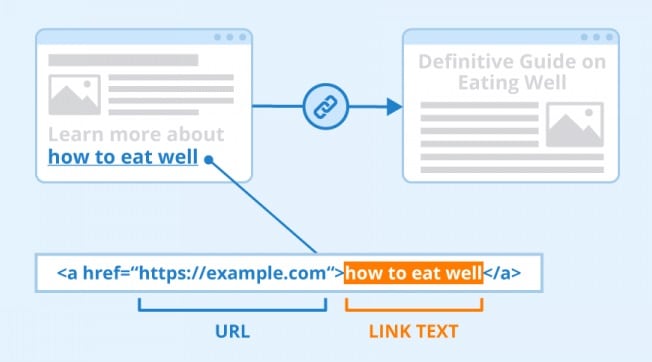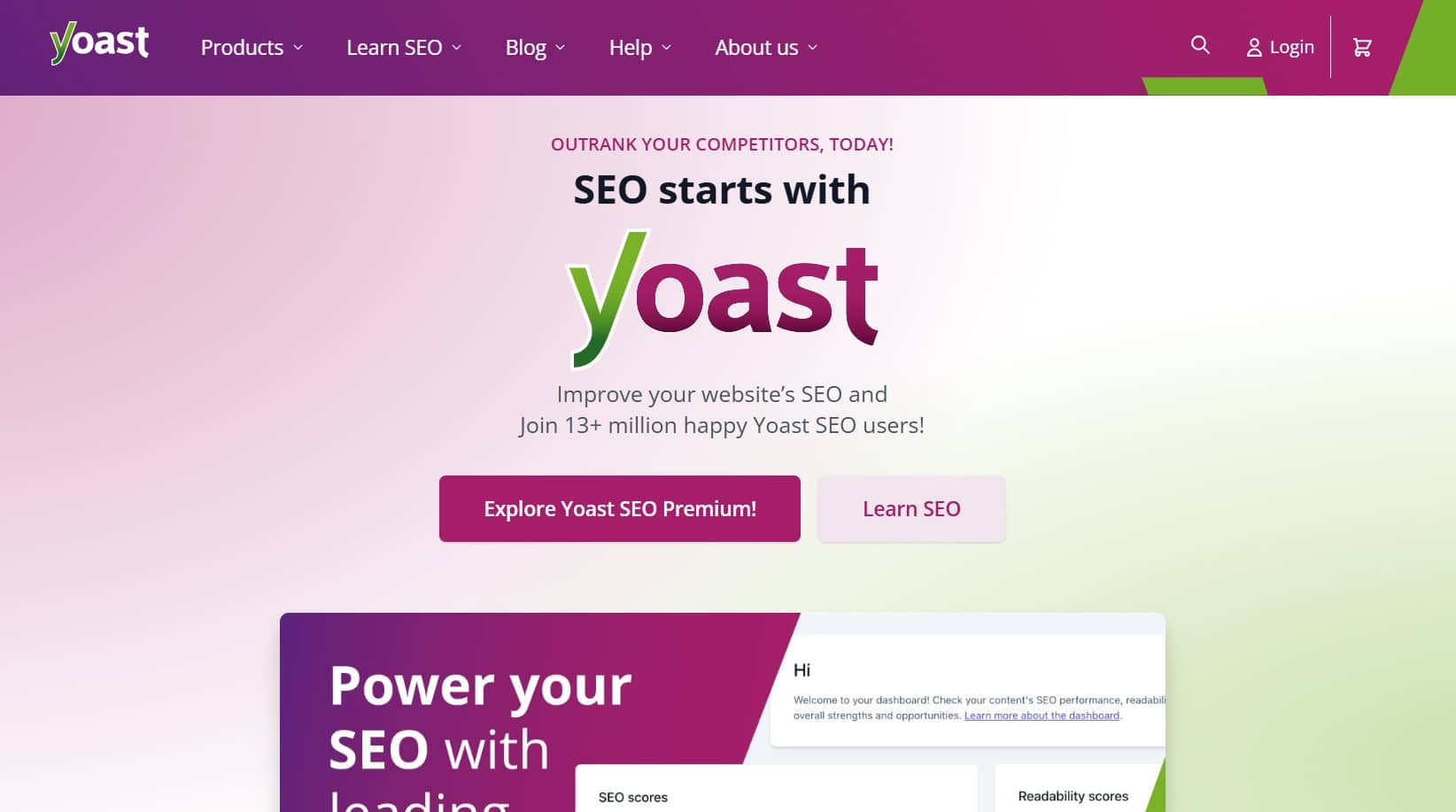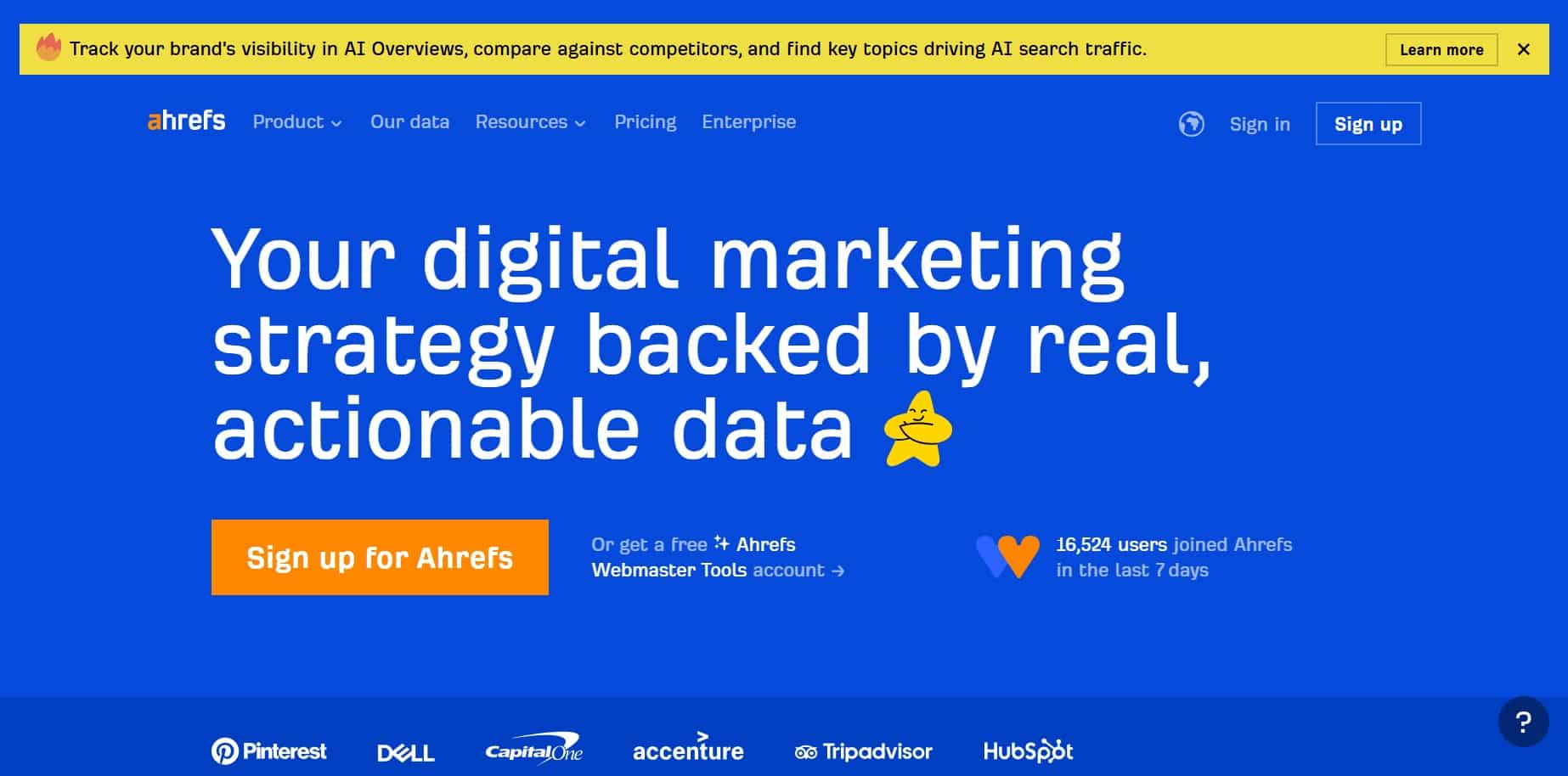Table of Contents
WordPress is a powerful Content Management System (CMS) that allows users to create websites of any complexity without learning how to code.
Take anchor text—a small detail that can make a massive difference in SEO performance. WordPress users often unknowingly create poor anchor text by pasting complete URLs, using “click here,” or letting visual builders insert unoptimized links.
What a waste of the dominant CSM’s power and your content. It’s like buying a race car and never taking it for a ride on a speedway.
Let’s fix it — this article will teach you how to tap into the full potential of your anchor links in WordPress.
What is Anchor Text?
Anchor text or link text is simply the clickable text in a hyperlink. The standard format used in anchor texts is blue color and an underlined font style.
It’s not hard to notice among the otherwise black color of the rest of the text. Anchor text is meant to stand out so users can effortlessly see where they can click.
Some even say that anchor text is used to mask a hyperlink so that instead of showing users the long and ugly URL path, they hide it behind a context-relevant and clickable word or phrase.

Source: Seobility
Why Anchor Text Matters for WordPress SEO?
Anchor text is more than just a clickable phrase — it’s a ranking signal. It helps users and search engines “understand” the content behind a hyperlink. The more accurate and detailed the description in the anchor text, the more ranking value a search engine attributes to such a backlink.
The right balance between accuracy and depth is no less critical, as you don’t want your anchor text to be sentence-long. SEO-wise, it’s much better to have shorter phrases or single words but in greater quantity.
Experienced content marketers can save time and effort by purchasing backlinks with optimized anchor texts. You, too, can buy backlinks to gain quick benefits for your site. However, sustainable results depend on broader SEO efforts.
For example, backlinks must be used in conjunction with creating optimized page content, boosting technical performance, and developing internal linking strategies—tried-and-true methods that we’ll discuss, along with many others, in the next chapter.
Top Anchor Texts: Best Practices for WordPress
The anchor texts work the same way in WordPress as in any other content management system. However, WordPress has unique features that simplify managing anchor texts, such as proprietary SEO plugins or user interface differences.
Leverage SEO Plugins & Tools
Plugins like Yoast SEO, Rank Math, and All in One SEO significantly simplify and automate the routine of adding an anchor link in WordPress. They help you make smarter decisions about anchor text by adding a WordPress-specific layer to your anchor text optimization.
Here is how these plugins can help you with the anchor link in WordPress:
- Detect overused or vague anchor phrases like “read more” or “click here”.
- Suggest context-rich anchor text based on your content and target keywords.
- Identify internal linking opportunities to improve site structure and crawlability.
- Warn against keyword stuffing or exact-match spam signals.
- Track content readability and link placement quality in real-time.
Don’t listen to those who say that using plugins equals cheating or that plugins slow down your system’s performance. They help you notice what you cannot see and speed up your anchor text optimization work.

Source: Yoast
Use Descriptive and Relevant Anchor Text
Relevant and descriptive anchor text helps users find their needs, increasing traffic and boosting your SEO leads.
Think of it as your content’s GPS — it should convey what’s ahead before people click the hyperlink. If your anchor text says “brand positioning” but leads to a blog post about advanced SEO tactics, nobody asked for that confusing road trip.
Relevance is the key characteristic, but too much relevance and details are not good either, as search engines like Google are configured to penalize content for a verbatim match between an anchor text and the referenced material.
Confused? Here are a few tips to help you nail it:
- Be specific: Stay relevant and avoid vague formulations like “click here” or “read more”.
- Match the context: Make sure the anchor text matches the sentence, paragraph, and whole post or article well. If it doesn’t fit naturally, people will not show trust.
- Think SEO + UX: Optimize the anchor text for SEO and human value.
- Avoid misleading links: If the anchor says “fishing boats”, don’t link to the article on economics.
Bottom line: Aim to strike the perfect balance between relevance and description, and always double-check your first draft for clarity for humans and SEO value.
Diversify Anchor Text Variations
To enhance your SEO ranking, use a mix of internal and external links as part of your link-building strategy. But that’s just step one — now, let’s talk about how you label those links.
If every hyperlink on your WordPress site uses the exact phrase like (“top link-building strategies” or “best tips on how to make winning content”), Google starts to get suspicious, to put it mildly.
And worse, it gets boring for readers. Variety is your best friend for humans and algorithmic restless crawlers.
Instead of repeating yourself like a parrot with a keyboard, switch things up. Use a healthy mix of:
- Exact-match keywords (e.g., URL tips for beginners).
- Partial-match phrases (e.g,. check out these beginner-friendly URL tricks).
- Branded anchors (e.g., WordPress SEO by URL).
- Generic terms (e.g,. this article, click here)
- Naked URLs (e.g. yourwebsite.com/url-guide) — but don’t overdo it.
Natural variability in anchor text distinguishes great content from simply good content. If you’re unsure or feel like starting with some guidance will save your day, forget about expensive consultants; use tools like Link Whisper, Ahrefs, and SEMrush.

Source: Ahrefs
Add WordPress Anchor Links to Improve Content Navigation
Hyperlinks aren’t just for improved SEO ranking. They also help navigate content in large documents, pages, and posts.
Everyone knows how convenient it is when a lengthy article has a handy table of contents where every chapter and subchapter title is clickable. Moreover, the strategically placed anchor links within chapters allow quick and effortless navigation to other, usually contextually connected chapters.
WordPress anchor links help guide your readers. They also positively impact many SEO metrics, such as increasing click-through rate (CTR), reducing bounce rates, and keeping people engaged with your content.
Here’s how to use internal anchor links effectively:
- Use clear, descriptive headings as anchor points — no one wants to click on “Section 8”.
- Stick to a logical content structure so anchor links make sense and add value.
- To boost conversion speed, link to business-important sections on the first occasion, such as check-out, pricing, or FAQs.
- Keep the anchor link text user-focused. Use descriptive and relevant phrases like “See our product comparison chart” instead of “Click here”.
- Test your anchor links to ensure they land where they’re supposed to. Broken WordPress anchors equal broken trust.
Bottom line: Internal linking is crucial for user engagement, conversions, and trust. In internal anchor text, you are not limited by the need to use an absolute URL type for better SEO results; relative URLs will do just fine. More importantly, they save time by being shorter and easier to make.
Optimize Anchor Text for Mobile Devices
Can an SEO survive without mobile optimization? Yes, but it won’t do well. Mobile-optimized anchor text is a critical ranking factor, as most users now access content via mobile devices. This dependence on mobile devices will only grow with time.

Source: Freepik
So, what does mobile-friendly anchor text mean? The anchor must be clickable in the tap-first environment, i.e., the right size, length, and position on the limited mobile phone screen.
Here are a few practical recommendations:
- Use short, scannable anchor text that doesn’t get cut off on smaller screens.
- Ensure links are spaced far enough apart to avoid the dreaded fat-finger syndrome.
- Check color contrast and underline styling to make links easily identifiable on any device.
- Avoid using hover-dependent link cues — mobile users don’t hover.
- Test your anchor links in landscape and portrait modes to ensure functionality and visibility.
If a user has to zoom into your anchor text to make a successful click, then it’s not a mobile-optimized anchor. Aim to make it tappable with one finger (thumb, to be sure) for an average person’s finger size.
Test and Validate Anchor Links
So, you know how to make anchor links to your WordPress content — nice! But don’t walk away just yet.
Anchor links only look good if everything’s in the right place. If your WordPress anchor links don’t work correctly, users will end up staring at the top of the page, wondering what just happened — and no one sticks around for that situation.
Validating anchor links is the final (and crucial) step to ensuring that your hard work pays off in usability and SEO performance.
Here’s what you should always check:
- Do the links jump to the correct section? Click each one and see if it lands where it should.
- Are all anchor IDs spelled correctly? Typos and inconsistencies can silently break everything.
- Do mobile users get the same smooth experience? Sometimes, WordPress anchors behave differently on smaller screens.
- Are the links working across browsers? Chrome, Safari, Edge — the gang’s all here. Make sure they all play nice.
- Is your Table of Contents plugin (if any) behaving normally? Some TOC plugins auto-generate anchors, which can clash with your manual ones.
Anchor links are prone to breaking in the same way as ordinary links do. This happens when a site structure changes, when a linking page gets moved, or for other reasons. Luckily, the broken Link Checker (Plugin) or Screaming Frog SEO Spider can help you quickly detect and fix broken anchor links.
The Final Recommendations
Anchor text is just a small ant in the vast world of SEO, but it carries enormous weight.
Even a single hard-to-tap or irrelevantly placed anchor text can cause irreparable damage to your brand’s reputation, to say nothing of the immediate SEO losses. Today’s users are accustomed to everything being super-comfortable, easy to use, and functional in their online experiences.
Follow this article’s best practices on optimizing anchors in WordPress sites, and you’re guaranteed to boost user experience, SEO value, and conversions from your content. Call it your do-it-yourself anchor toolkit if you’d like.
The best piece of advice is to align your anchor text improvements with your content strategy on every business occasion, such as launching a new product, entering a new market, or acquiring customers.
Make anchor text optimization part of your regular performance tracking, and you’ll never undermine the effectiveness of even your best-performing content pieces.
